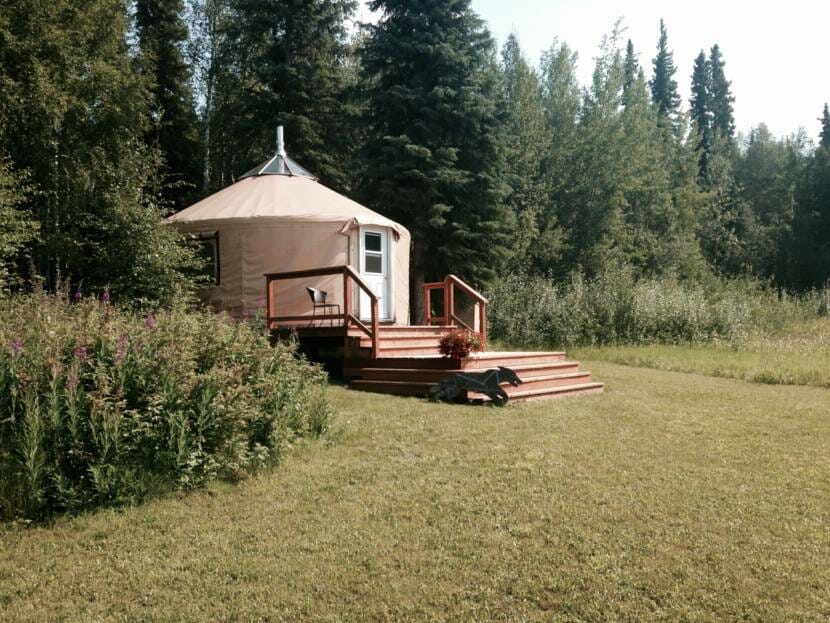
Haines has grappled with the question since at least 2013: Should yurts be considered permanent housing? Right now, they’re allowed — as long as they’re fixed to a permanent foundation.
But recently Haines’ planning committee recommended prohibiting them as permanent structures. Existing ones would be grandfathered in. But going forward, any new yurt or similar tent-like structures would have to be relocated after 18 months.
That’s following complaints from adjacent property owners who complain tent-like structures are substandard and drag down property values.
Planning Committee member Diana Lapham cited the need for uniform standards for structures in the Haines community. She says building code enforcement is difficult.
“We’re running into structure creep because we don’t have enforcement, because of all the turnover of the borough” Lapham said. “And we were in crisis management for many years, and we still are. But now have a planner that will be able to hopefully get out and look at some neighborhoods and send letters of violation.”
[Sign up for Alaska Public Media’s daily newsletter to get our top stories delivered to your inbox.]
The Haines Assembly recently punted on the idea of whether to limit yurts to just a year and a half. Instead, it sent the question to its Government and Services Committee, which held a more-than-hour-long yurt discussion at its July 6th meeting.
Haines City Planner Dave Long, just four weeks on the job, reported there are nine yurts across the townsite. He echoed concerns from critics who worry about downward pressure on property values.
“People have invested money, in either residences or commercial,” Long said. “And they’re the people that, over time, I see that they’ve been here and made investments and would be most concerned about alternate structure coming and moving in next door, or on the corner next to the brewery… So I think that zoning is important, I think some zones would fit these structures better than others.”
But to those that live in yurts, the yurt is home. Nick Schlosstein, who runs a farm and seed company, argued that fears about property values are overblown.
“Our neighbor across the street just sold their house for their asking price, like, in full view of our yurt,” Schlosstein said. “You can look at the assessment values for all the houses around us over the last six years and probably see that hasn’t impacted anybody’s assessed value.”
Yurt resident Evan Sergeant says building codes should be enforced. But he asked why yurts — and not other types of structures like tiny homes — are singled out when there are all types of structures being lived in.
“So I would support work to raise the building standards like some of you’re talking about,” Sergeant said “I don’t want a bunch of connexes in front of my view. I also don’t want a bunch of dead trucks, dead campers, dead jet boats, everything else. And we’re not talking about banning those.”
He suggested that some people don’t like yurts because there’s a stigma — that it symbolizes counterculture lifestyle.
“So I think at the end of the day, we need to decide whether we’re going to adopt the Alaskan principle of live and let live, or we’re going to adopt housing standards and enforce them uniformly instead of just trying to specifically cherry pick types of structures, we maybe don’t agree with the type of people that live in them,” he said.
It’s been a difficult issue for local officials to grapple with. And it’s not going away. The Government and Services Committee, which received a referral from the Planning Commission, is taking more time. It formed a subcommittee to take a hard look at zoning and building standards with members of the Planning Committee.




